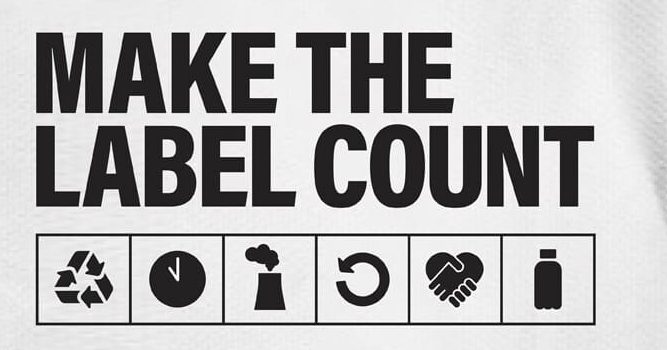
RECENT research has highlighted wool’s eco-credentials as the the proposed environmental labelling on apparel in the European Union that threatened to disadvantage woollen products has been deferred.
Australian Wool Innovation has led research efforts to address shortcomings in the Product Environmental Footprint (PEF) methodology that would have rated synthetic fibres made from fossil fuels better for the environment than natural fibres like wool.
AWI said it reached out to wool growers and worked collaboratively with like-minded organisations globally to highlight concerns and address the weaknesses of PEF methodology on two fronts; providing expert advice via the International Wool Textile Organisation to the European Commission’s PEF Technical Secretariat and advocating to EU policymakers as part of the Make the Label Count campaign.
AWI’s program manager, fibre advocacy & eco credentials Angus Ireland said the role of Australian growers in highlighting the flaws helped greatly.
“At the IWTO in Adelaide last April, wool industry participants were encouraged to respond strongly to the EU’s final public consultation on PEF’s methodology flaws – and they clearly did.
“Wool buyers and brokers, such as Fox and Lillie, helped greatly in getting the message out and asking growers to respond,” he said.
“Notwithstanding the need for a ‘black belt in passwords and apps’ to access the EU’s consultation portal, more that 80 percent of the 293 responses were from natural fibre industries, with the great majority from wool.
“It now seems likely the French Eco-score for textiles will take priority, with mandatory labelling required to substantiate green claims for clothing sold in France expected in 2026,” Mr Ireland said.
“However, PEF may still be applied to other EU legislation, and is something AWI staff continue to monitor and engage in.
“The French scheme uses AWI’s high-quality LCA dataset and reports a more favourable score for wool but it’s far from mature or robust, so it’s critical we continue to engage with French policymakers proposing improvements to ensure a level playing field for wool and other natural fibres.”
Mr Ireland said the responsibility for PEF rests with the EU Director General of the Environment.
“The commission seems to have heard the concerns raised by different stakeholders, including the wool industry’s efforts.
“The PEF methodology is not being abandoned, but its role as a single consumer-facing score for apparel and footwear (B2C) has now become uncertain and is being deferred,” he said.
“We don’t have a firm deferral period as PEF based single score can still be used for B2B and corporate comms (e.g. CRS reporting)
“France’s initiative to go ahead with their own labelling has disrupted the EU-wide approach, and the Commission wants to avoid multiple conflicting scores,” Mr Ireland said.
He said the commission has confirmed it will soon be updating its Environmental Footprint Guidelines (for all product categories) and will include previously neglected indicators that we have been pushing for – such as microplastics, circularity, biogenic carbon, and biodiversity (hence it’s opportune for DG ENV to defer release of PEF scoring until these improvements have been made).
“Other EU legislation, such as ESPR and the Green Claims Directive, may still reference PEF.”
Latest research confirms wool’s eco-credentials
AWI this week announced the findings of its latest research project that underscores the environmental benefits of wool garments.
The AWI-funded project has revealed that wool’s natural odour resistance not only keeps wearers fresher for longer, but also significantly reduces the energy required for laundering compared to polyester and cotton garments.
The study, led by AgResearch in New Zealand in collaboration with Consumption Research Norway (SIFO), focused on the energy consumption associated with laundering garments made from different fibre types. Human volunteers participated in the study, wearing base-layer garments (T-shirts), mid-layer garments (hooded sweaters), and pairs of socks made from Merino wool, cotton, and polyester. The participants assessed the garments’ odour to determine the number of days they could be worn before laundering was necessary.
AWI said the study found wool garments required the least frequent laundering, followed by cotton, with polyester garments needing the most frequent washing. Over the course of a year, wool garments demonstrated the lowest energy consumption during laundering, making them the most environmentally friendly option.
AWI said the study’s findings are promising for the wool industry. The research demonstrated that wool’s natural odour resistance allows for longer wear between washes, reducing the frequency of laundering and, consequently, the environmental impact. This aligned with previous research showing that wool garments have a longer lifespan and are more likely to be reused or recycled.
AWI chief executive officer John Roberts said wool’s natural odour resistance and reduced laundering frequency make it an excellent choice for environmentally conscious consumers.
“This research reinforces our commitment to promoting sustainable practices within the wool industry and supporting Australian wool growers.”
Mr Ireland said the study reinforces the positive eco-credentials of wool in a world where there is increasing concern about society’s trend towards ‘fast fashion’ and the effect on the environment of synthetic textiles.
“The fact that wool clothes need less frequent washing not only reduces energy consumption, it also preserves the as-new look of the garment, enabling consumers to continue wearing it for longer.
“By AWI funding scientific studies such as this one, the wool industry is in a knowledge-powerful position regarding the true impact on the environment of wool compared to other fibres,” he said.
“Importantly, the studies enable AWI, Woolmark and the wider wool industry to demonstrate to the fashion and textile trades, regulatory bodies, and consumers that wool is the planet-friendly fibre of choice.
“The results of this particular study also indicate the benefits of focusing environmental research on consumer habits and culture, and not only technologies.”
The research also explored the broader implications of wool’s eco-credentials and found that the fibre’s ability to biodegrade and its renewable nature, position it as a leading material in the fight against fast fashion and textile waste.
The study also highlighted the importance of consumer education in promoting sustainable laundering practices by encouraging consumers to wash their wool garments less frequently and at lower temperatures, further reducing the environmental impact of clothing.
AWI said it is committed to raising awareness about these practices and supporting consumers in making environmentally friendly choices.
Click here to read AWI’s recent submission to the European Commission’s consultation on the use of PEF in delivering the EU’s Ecodesign for Sustainable Products Regulation (ESPR).

I comment as a 14-16 micron wool producer on the New England Tablelands of NSW.
We use vaccines and only use chemical dosing according to stool worm egg counts.
Pastures remain native oversown with winter growing species.
Biodiversity conservation reserves cover 21 percent of the property, with 21 km of fencing. We receive $7000 to help cover conservation costs.
Wool prices for our fibre, related to costs is poor and conservation requires money and time. Given better prices we can not only conserve, but revegetate, with all its environmental benefits.
Ron Hawksford.